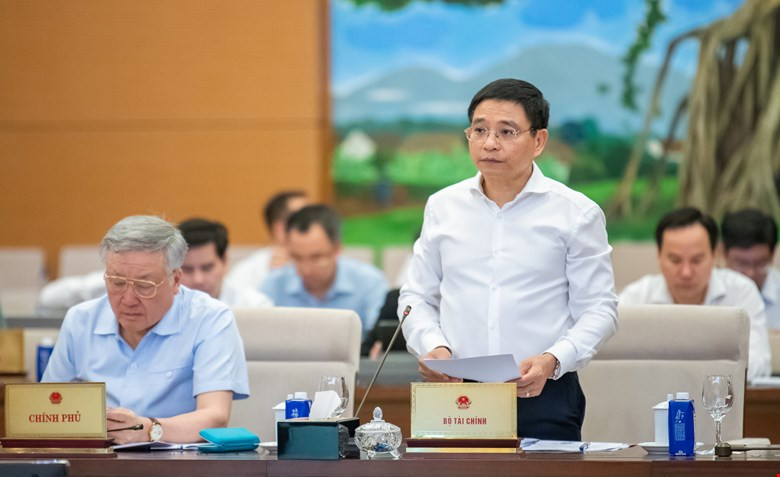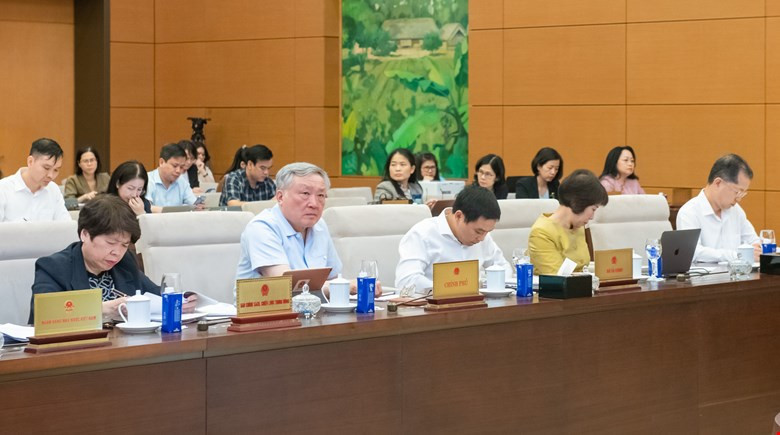The government has agreed to submit a revised proposal to the relevant authorities confirming that Vietnam will have only one international financial center (IFC), governed by a single policy framework and located in both Ho Chi Minh City and Da Nang.

Minister of Finance Nguyen Van Thang. Photo: National Assembly
On the afternoon of April 17, during the 44th session of the National Assembly Standing Committee, members discussed the draft resolution on establishing an international financial center in Vietnam.
Presenting the government's summary report, Minister of Finance Nguyen Van Thang emphasized that, based on political, legal, and practical grounds both domestically and internationally, it is essential for the National Assembly to issue a resolution on developing an international financial center in Vietnam.
The draft resolution comprises six chapters and 36 articles, detailing administrative procedures necessary for implementing special mechanisms and policies to operate and develop the IFC.
These administrative procedures are designed to be simplified to facilitate maximum ease for organizations and individuals involved in the IFC's development.
One center, two cities
Le Thi Nga, Standing Vice Chairwoman of the Committee on People’s Aspirations and Oversight, commented, “This is a highly complex and new area for Vietnam. Financial matters are extremely sensitive, so we recommend thoroughly evaluating potential impacts on the economy, national security, defense, public order, and social safety.”
Minister Nguyen Van Thang noted that there are approximately 121 financial centers globally, but fewer than 10 have achieved notable success.
Earlier this year, the Politburo approved the establishment of a comprehensive international financial center in Ho Chi Minh City and a regional financial center in Da Nang.
However, after reviewing international models and conducting domestic surveys, the Ministry of Finance concluded that developing two separate financial centers of differing scales in two cities may prove inefficient and less likely to succeed, especially given that this model is entirely new to Vietnam.

Author: The Vinh
Therefore, the government has decided to present a unified proposal to higher authorities, determining that Vietnam will have only one international financial center with a single policy framework, located in both Ho Chi Minh City and Da Nang.
Specifically, Ho Chi Minh City will focus on developing capital markets, international banking, financial services, and regional value chains. Meanwhile, Da Nang will specialize in green finance, fintech, and regional fund management, connected to a free trade zone in the city.
“However, this division is only relative. Ultimately, the decision lies with investors,” Minister Thang noted.
Permanent Deputy Prime Minister Nguyen Hoa Binh emphasized that Vietnam’s current economic scale is modest. Simultaneously building both an international and a regional financial center in two different cities would not align with reality and would be unsustainable.
Thus, the decision to develop one international financial center with functions distributed across two cities, tailored to their respective strengths, is more practical and ensures these cities grow without competing with each other.
Concluding the session, National Assembly Vice Chairman Vu Hong Thanh acknowledged that developing an international financial center in Vietnam is both “new and difficult.”
He recommended that the drafting committee continue coordinating efforts, clarifying the policy groups outlined in the draft resolution, and addressing concerns regarding the dual-city model, including the coordination mechanism and the operational independence of the managing agency for the two locations.
The Vinh